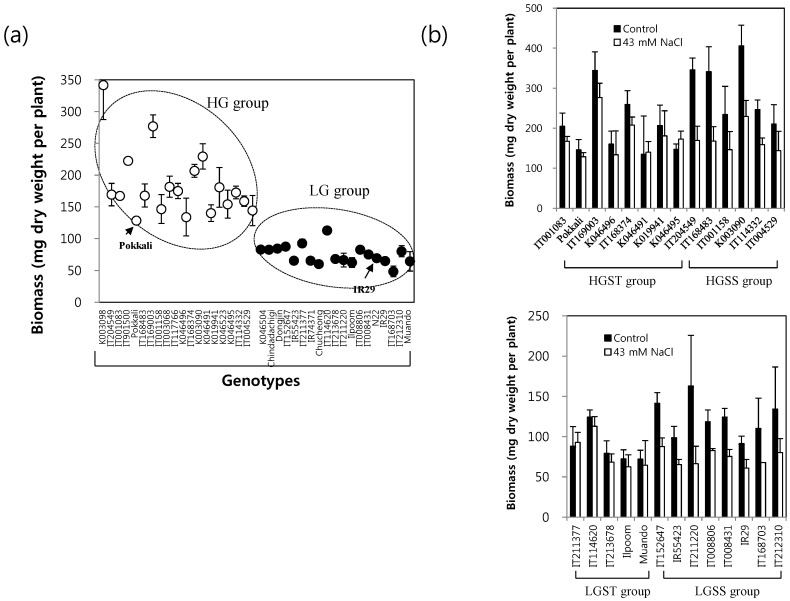Figure 1.
(a) Rice germplasms differing in the ability of biomass accumulation in the presence of moderate salinity. Imposition of 43 mM NaCl supplemented to half strength Yoshida’s nutrient solution started on rice seedlings of the three or four foliar leaf stage, which is known as a sensitive growth stage to salinity and ended at 14 days after starting the salinity imposition. Biomass was determined after the end of salinity treatment. Reference rice genotypes were used for cv. “Pokkali” (129 ± 5.2 mg) as a relatively tolerant genotype and for cv. “IR 29” (65 ± 5.5 mg) as a relatively sensitive one. Each mark represents the mean of nine plants. HG, high growth group; LG, low growth group; (b) Changes in the biomass accumulation of rice genotypes in response to 43 mM NaCl. Genotypes showing less than a 20% inhibition of biomass accumulation by salt stress were grouped as the salt-tolerant (ST) and genotypes with more than 30% inhibition as the salt-sensitive (SS) group. Bars indicate SD.

